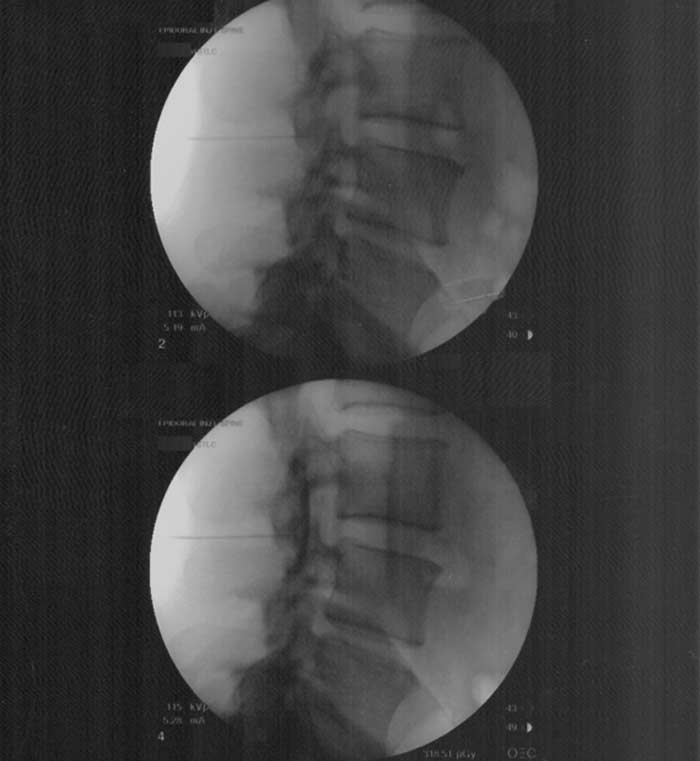

Epidural injections can provide temporary pain relief to the back or legs.
An epidural injection is an administration of medication (like steroids) into the epidural space, or the outermost space within the spinal canal, through a needle. This technique works relatively quickly because it utilizes the body’s natural communication system, which is the nervous system, to deliver the medication.
- Medication is delivered directly to the pain’s source
- Long-lasting relief
- Quick delivery and injection process with little to no downtime
What Are They Used To Treat?
There are a number of conditions that can be treated with epidural injections. However, this will likely not be the first treatment option because other options are less-invasive. If the patient is experiencing pain in their back or legs, then their doctor will first want to diagnose the cause of the pain before proceeding with a treatment plan. The diagnostic process will include blood tests, imaging tests, and a physical examination. Often in the case of back or leg pain, the nerves have become damaged through injury or various conditions.
These conditions include spinal stenosis, herniated disc, bone spurs, or other conditions that result in nerve compression. If the physician determines that the cause of the pain is nerve damage, they will first recommend some medication and exercises. However, if the patient doesn’t experience pain relief through non-invasive measures, the physician may recommend an epidural injection as it has been proven to offer temporary pain relief for these conditions.


How Is The Procedure Performed?
This procedure is almost always performed on an outpatient basis and there isn’t a strict recovery time. However, the patient should plan on having someone else drive them home because they may feel some odd sensations in their back. The physician should provide pre-operative instructions regarding which medications to take and how to prepare for the procedure. Generally, the patient will lay on a CT table either on their side or stomach.
This procedure doesn’t require the use of general anesthesia, but the patient will likely be given a medication to help them relax. The CT machine will be used to determine the ideal location for the procedure. Then, the physician will place sterilize the skin over the area and apply a local anesthesia. The needle will then be inserted into the area of concern. Once the needle is in position, the staff will likely intravenously insert contrast so that the physician can see the nerves. Finally, the physician will inject the medication to the area slowly. The patient is then allowed to rest for up to an hour to monitor for adverse reactions.
What Is The Outcome?
Generally, patients who receive epidural injections do experience pain relief. This method is precise in that it delivers the medication directly to the source of the pain and utilizes the body’s own channels to deliver the medication. Although this pain relief isn’t considered permanent, it can last longer for some people than others.
